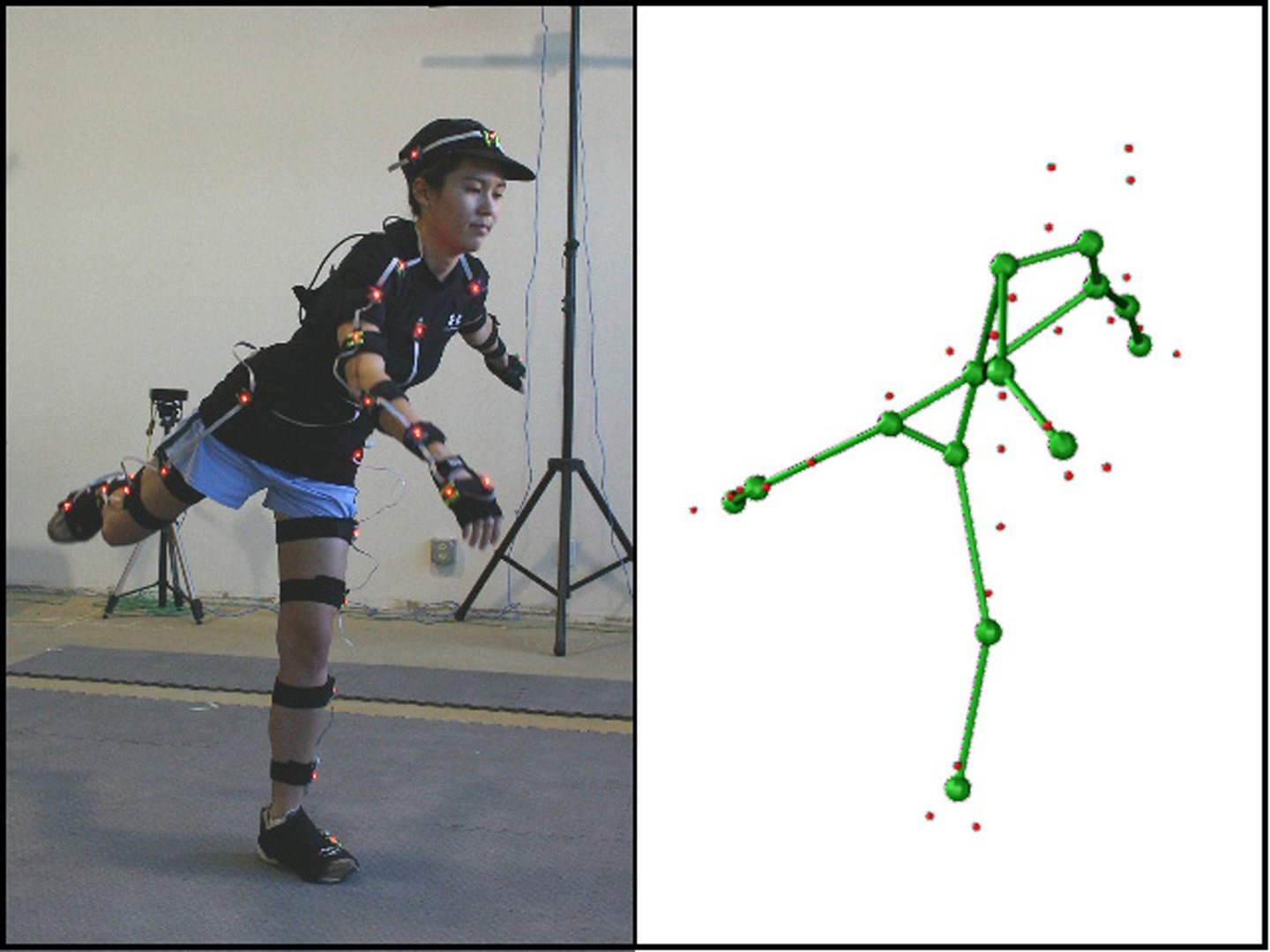“Skeletal Parameter Estimation from Optical Motion Capture Data” by Kirk, O’Brien and Forsyth
Conference:
Title:
- Skeletal Parameter Estimation from Optical Motion Capture Data
Session/Category Title: Motion
Presenter(s)/Author(s):
Abstract:
In this sketch we present an algorithm for automatically estimating a subject’s skeletal structure from optical motion capture data without using any a priori skeletal model. Our algorithm consists of a series of four steps that cluster markers into groups approximating rigid bodies, determine the topological connectivity between those groups, locate the positions of the connecting joints, and project those joint positions onto a rigid skeleton. These steps make use of a combination of spectral clustering and nonlinear optimization. Because it does not depend on prior rotation estimates, our algorithm can work reliably even when only one or two markers are attached to each body part, and our results do not suffer from error introduced by inaccurate rotation estimates. Furthermore, for applications where skeletal rotations are required, the skeleton computed by our algorithm actually provides an accurate and reliable means for computing them. We have tested an implementation of this algorithm with both passive and active motion capture data and found it to work well. Its computed skeletal estimates closely match measured values, and the algorithm behaves robustly even in the presence of noise, marker occlusion, and other errors typical of motion capture data.
References:
O’Brien, J. F., Bodenheimer, R. E., Brostow, G. J., and Hodgins, J. K. 2000. Automatic joint parameter estimation from magnetic motion capture data. In Proceedings of Graphics Interface 2000.





